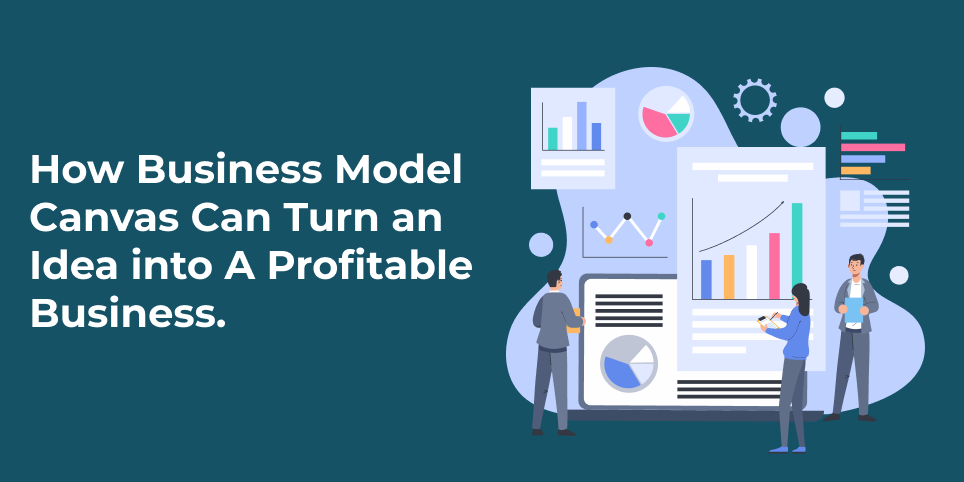
How Business Model Canvas Can Turn an Idea into A Profitable Business.
Business Model Canvas is a visual, strategic management template that consists of nine building blocks. This concise article displays the entire business model, defining all the key aspects in simple terms.
The Global Startup Ecosystem is on a boom, opening the doors for budding entrepreneurs to expand & explore its horizons. Thriving in a product-driven market is way too difficult. But having consumer-driven solutions upscales the probability of an idea transforming into a profitable business. The success of any business idea lies in its target audience.
A Business Model not only helps in uncovering the pain points of the target audience but also detects the loopholes in the entire evolution process of the business model. A great startup idea with no audience is similar to having solutions to a problem that does not exist. Investing time, finance, or energy into such a business venture is futile indeed!
What is Business Model Canvas?
Business Model Canvas is a strategic management template, that offers a visual map of how an organization creates, delivers, or captures value. In a well-organized manner, it assists in aligning various facets of business conduct, thereby demonstrating potential trade-offs, and enabling entrepreneurs to focus on the growth potential of their startup ideas. It helps in laying the foundation of a long-lived sustainable business venture, saving time, and resources.
Alexander Osterwalder, a Swiss business theorist, was the very first person to propose Business Model Canvas; a design template consisting of nine building blocks of the business model. These nine building blocks are segmented as:
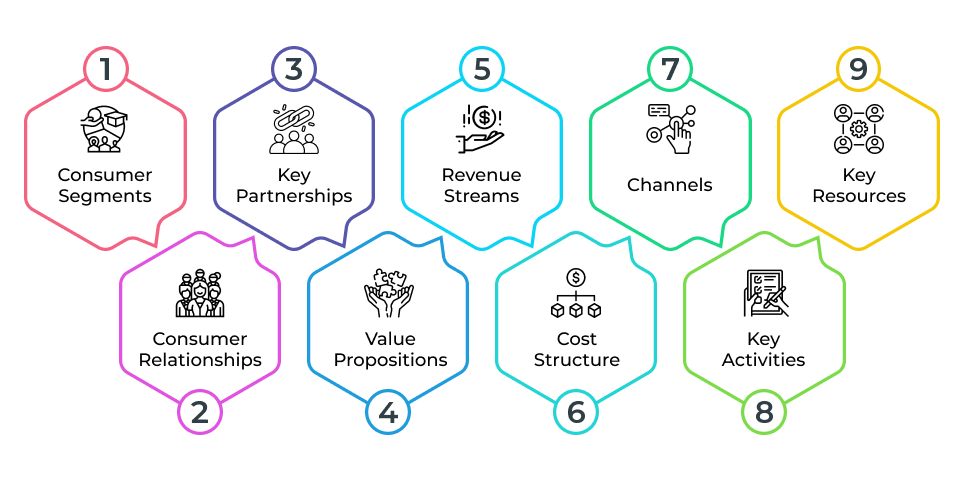
Why use Business Canvas Model?
Primarily, the Business Model Canvas uncovers three vital aspects of any startup idea;
- Desirability: Does the consumer WANT it?
- Feasibility: Is it Deliverable?
- Viability: What is its worth?
Giving a clear overview of what the startup idea entails, in an instant; Business Model Canvas projects the prospect of how an idea shall turn into a profitable business.
Advantages of using Business Model Canvas:
- The concise strategic template that in a very simple format, explains all the nine segments of the business model.
- A visual map portraying the entire evolution process in a well-organized format; can be relied on as a source of an investor pitch.
- Practical aspects demonstrate areas of potential growth as well as weak points that can lead to downfall.
- With quick iterations, these templates are easy to operate, share, and receive feedback from mentors or advisors.
For any business to thrive, it is vital to have an efficient business model. The below section gives an in-depth understanding of the nine building blocks of Business Model Canvas, and how to fill the nine boxes given in the template. Let us delve deeper into each section, understanding one at a time.
How-to Guide explaining the nine building blocks of the Business Model Canvas
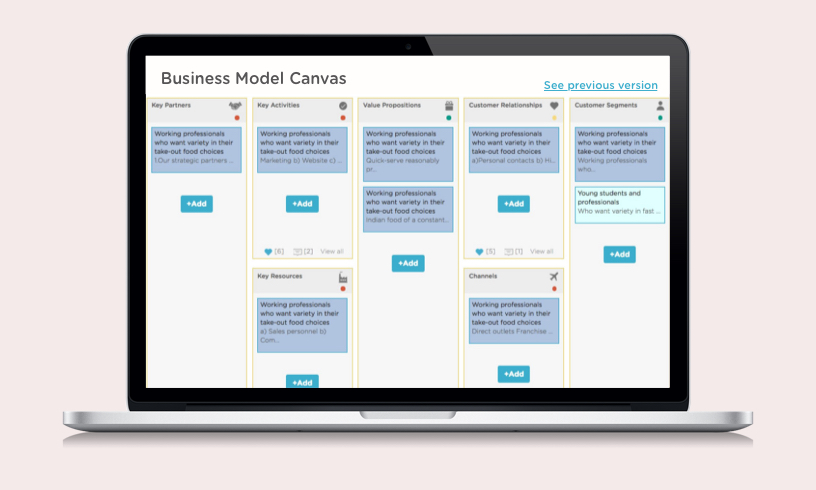
1) Consumer Segment:
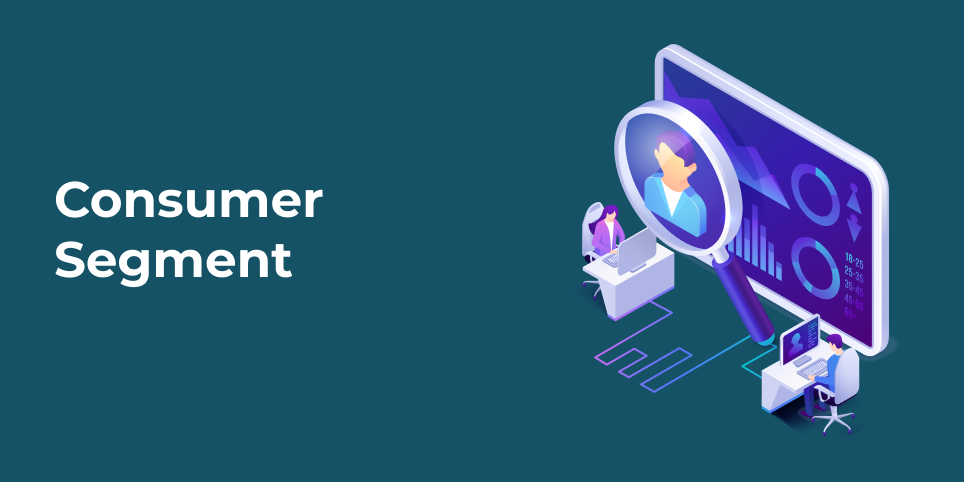
Identifying target consumers is like laying the first brick in the foundation of a structure. For any business to succeed, it is vital to select the correct set of consumer segments.
A group of consumers with common wants, needs, attributes, or pain points, defines a consumer segment. Catering to the right set of consumer segments ensures proper implementation of corporate strategy.
How to select a consumer segment?
Firstly, one needs to identify the perfect match for their product line from different types of consumer segments, that are:
- Mass market: It is an undifferentiated market, manufacturing large-scale consumer goods to cater to a wide consumer base. It seeks to accommodate a wide range of potential clients, covering the entire market available. For example automobiles, furniture, etc.
- Niche market: It is a subset of a large market, as it caters to a small set of consumer segments. Products are featured to satisfy specific market needs. For example vegan, pet, eco-friendly, health & fitness, etc.
- Segmented Market: It includes identification of consumer groups, based on geographic, demographic, psychographic, and behavioral aspects; for presenting to them a specific product line that appears appealing to them.
- Diversify market: A company strategizing to expand its business by adding products related to its niche. For example, the automobile industry expanding its business by introducing trucks.
- Multi-sided platform market: When two independent groups with different expertise undergo a merger, to cater to a common consumer need. For example, Airbnb, Uber, PayPal, etc.
Check out thoroughly on finding answers to these questions at this stage:
- Is there a demand for interactions or relationship development between the company and consumer base?
- Can one approach the consumer base via different channels?
- Is there a need to launch various offers? If yes, what shall be the worth of the defined offers?
- Does the consumer base differ depending on the profitability of the business?
- Which segment offers the most loyal consumer base?
- Which segment is most profitable, and what is its penetration rate?
Lastly, to survive in the highly competitive market, it is very important to keep an eye on the competitors. What do they offer? How is it unique? How can one compete for their offer by proposing counter offers?
2) Value Propositions:
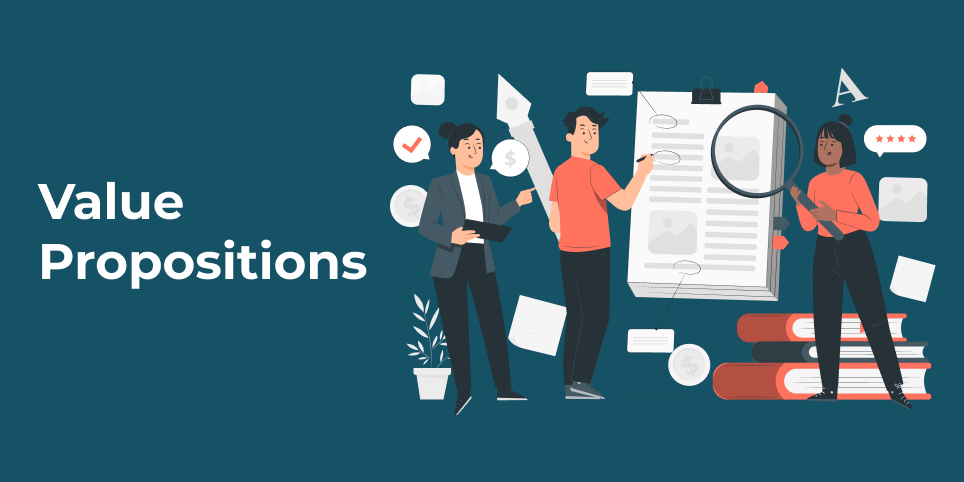
The value proposition of an organization is an aggregation of products, services, and/or solutions, that cater to the demand of consumers. It is a promise to deliver, acknowledge, and communicate value to the consumer. It is the prospectus of an organization that represents its USP (Unique Selling Proposition).
All value propositions are a bundle of products, services, solutions, and all the benefits that a company offers to a specific customer segment. Value propositions can be Quantitative (cost and efficacy) and/or Qualitative (Consumer experience and value outcome).
An organization offers value through elements such as; performance, uniqueness, design, status, brand, risk minimization, cost-efficacy, accessibility, approachability, customization, convenience, and accomplishment of tasks.
The value proposition is the reason, why any consumer chooses one organization over the other. So, a happy consumer is the only source to achieve sustainable value creation.
Check out thoroughly on finding answers to these questions at this stage:
- What is the PROBLEM one intends to solve?
- Is the offered SOLUTION desirable to the consumer base?
- What is the benefit offered? What bundle of products, solutions, and/or services are offered?
- Is the benefit desirable to the selected consumer segment?
The secondary focus must remain on what benefits are to be served on the plate of consumers, and how these benefits shall be delivered. One must note that features do not define benefits. The benefit is the outcome of pain relief that a product provides through its features. So, it is vital to quantify the benefits as precisely as possible.
The competition is always between three aspects: consumer experience, product uniqueness, and cost-efficacy.
3) Channels:
To convey its value propositions to the target consumers, an organization requires a proper channel of distribution, communication, and sales. Channels are consumer touchpoints and comprise the organization’s interface with the selected consumer segment.
Channel plays an important role in the value chain because it raises awareness among the consumers regarding the products, solutions, or services, an organization intends to offer. This encourages the consumers to evaluate an organization’s value proposition. For an efficient business model, it is very important to select the relevant channel to cater specific segment of consumers.
Check out thoroughly on finding answers to these questions at this stage:
- How to deliver value proposition and cater to the requirements of specific consumer segments?
- Will the selected channel, convey the value propositions of an organization to its consumer segment, most effectively?
- Is the channel uncluttered, integrated, or synchronized to the consumer’s routine?
- Can one optimize the channel by leveraging resellers, value-added services, or channel partners?
- How to let consumers stream through a variety of products or services?
- How to provide post-purchase consumer support?
- Which channel is the most cost-effective?
4) Consumer Relationship:

To establish a successful sustainable business, an organization must build a robust relationship with its consumer. Primarily, an organization must derive what kind of relationship it wants to establish with each consumer segment. Consumer relationships can be personal, manual, or automated. The factors majorly impacting consumer relationships are consumer retention, consumer acquisition, and up-selling.
Check out thoroughly on finding answers to these questions at this stage:
- What impels customers the most?
- The consumer segment expects to build what type of relationship?
- Is the selected mode of consumer relationship viable, feasible, and integrated with the business model?
5) Revenue Stream:
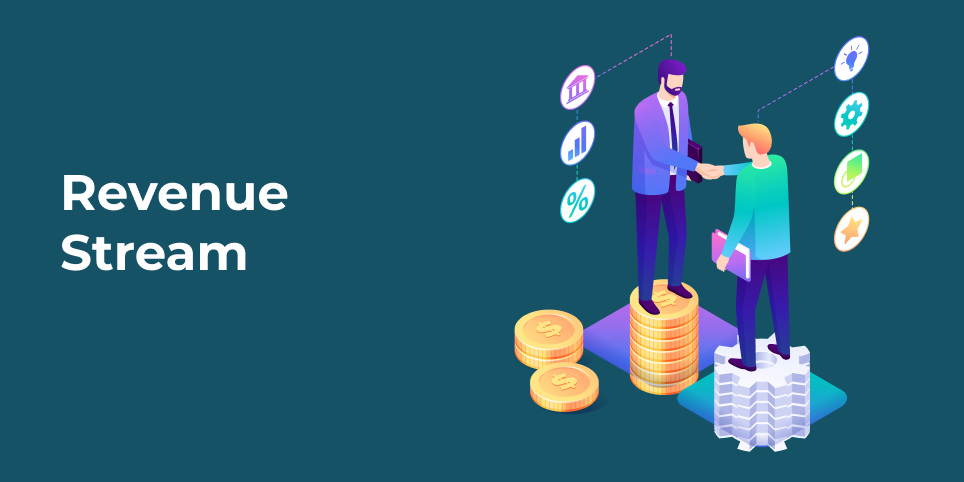
The success of a business venture is defined by the revenue it generates in a period. After all, that is what matters in the end; as it is a major aspect of building brand value. A revenue stream is defined as the revenue an organization generates from each of its consumer segments.
A business model comprises two types of revenue streams, one is transaction revenues, generated from one-time consumer payments. The second is recurring revenues, generated from recurrent payments made by consumers for value proposition or customer support services.
The modes of revenue generation include:
- Usage fee: fees charged for usage of a specific service/product. e.g., charges for hotel stay
- Subscription fee: fees charged for offering access to uninterrupted service. e.g., charges for Netflix
- Asset Sale: Money earned as an exchange for selling one’s ownership rights on physical goods or commodities. e.g., retail corporations
- Brokerage fee: Commission charged for providing intermediate service between two parties.
- Renting/leasing: Revenue generated by offering exclusive rights of an asset, for a specific period.
- Licensing: Charges levied on usage of protected intellectual property.
- Advertising: Fees charged for advertising the product/service.
Check out thoroughly on finding answers to these questions at this stage:
- What is the value offered, worth?
- How much does the consumer intend to pay?
- How many revenue models one must use?
- How to define the primary revenue model?
- What amount shall each revenue model contribute to the total revenue generated?
6) Key Activities:
Key activities are important actions a business must perform, to achieve the value proposition for consumers. It is a vital aspect for a business model to work on full efficacy.
Check out thoroughly on finding answers to these questions at this stage:
- What are the necessary activities for achieving the value proposition?
- What are necessary activities for distribution channels?
- What are the necessary activities for generating revenue streams?
- What are necessary activities for developing consumer relationships?
7) Key Resources:
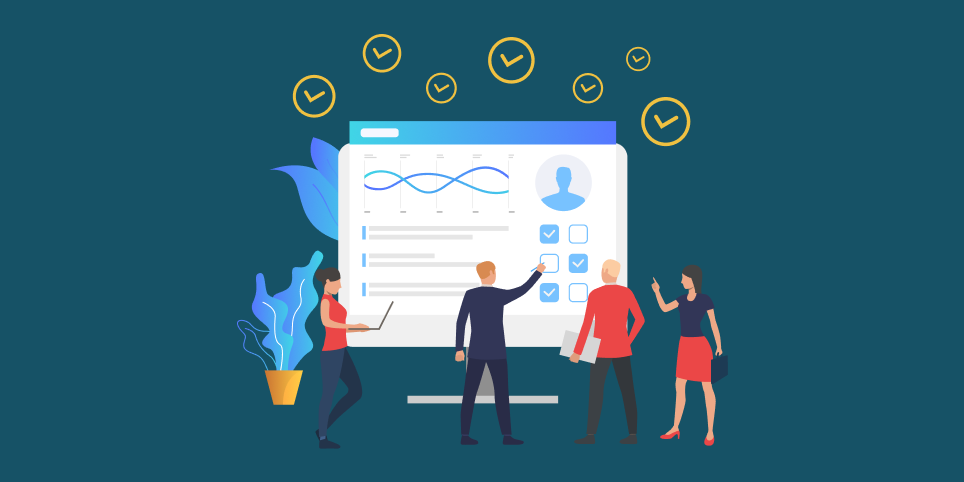
To undertake key activities for achieving value propositions for the consumer, an organization requires resources. Key resources are assets to an organization intended to sustain and support its business. Key resources can be financial, physical, or intellectual. An organization can acquire, lease, rent, or own the key resources.
Check out thoroughly on finding answers to these questions at this stage:
- What are necessary resources for achieving the value proposition
- What are the necessary resources for distribution channels?
- What are necessary resources for generating a revenue stream
- What are necessary resources for developing consumer relationships
8) Key Partnerships:

Companies, suppliers, or parties, catering to common consumer segments, undergo joint ventures, alliances, or strategic partnerships; to deliver the value proposition, acquire assets, reduce business risks, and optimize the business model. Simply put, the key partnership is a mutually beneficial agreement between different stakeholders.
Check out thoroughly on finding answers to these questions at this stage:
- Which customer segments must be entertained?
- Who are the key partners?
- What expertise does the partner offer?
- Which activities do the partner intend to perform?
9) Cost Structure:
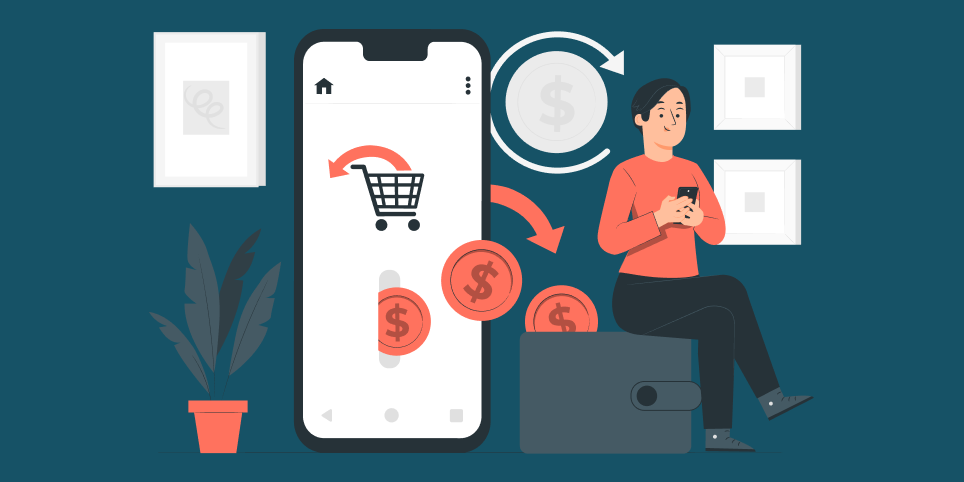
Cost structure provides a statistic of monetary consequences incurred while operating under various business models. It is of keen importance to leverage cost arbitrage on the business model. The cost structures can be Value-driven or Cost-driven. Cost structure can be of a fixed amount, varying amount, scaling amount, or scoping amount; depending on the manufacturing of goods or commodities.
An organization must acquire in-depth knowledge, whether its business is of fixed cost or variable cost. Besides, an organization needs to know the cost of acquisition and the most expensive aspect of its business model. To illustrate, for an airline company, the airplane is the most expensive asset of all.
Check out thoroughly on finding answers to these questions at this stage:
- What are the most expensive aspects of the business model?
- Which are the most expensive key activities?
- Which are the most expensive key resources?
Key Thoughts
A business model canvas can become your stepping stone to climbing the business ladder with success. Once you know how to position the model in your startup journey, you will be constantly guided by the insights it gives to you. However, with the changing consumer needs, you may change the business model canvas and make it a better fit as per the current scenarios.
Soon you fill these 9 boxes of the business model canvas, the next step is to get feedback on each of the boxes from the experts and business planners. This will help you get the direction of placing the model according to the business needs. And then you can start with market segmentation, penetrations, market positioning, and market share.



